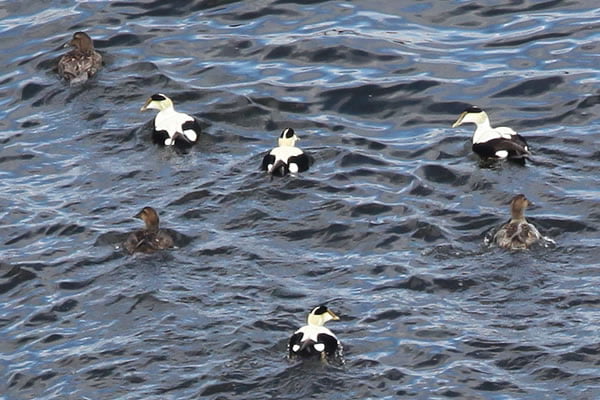Related Publications
Wayland, M., H. G. Gilchrist, T. Marchant, J. Keating, and J. E. Smits. 2002. Immune Function, Stress Response, and Body Condition in Arctic-Breeding Common Eiders in Relation to Cadmium, Mercury, and Selenium Concentrations. Environmental Research 90:47–60. https://doi.org/10.1006/enrs.2002.4384
Wayland, M., J.E.G. Smits, H.G. Gilchrist, T. Marchant, J. Keating. 2003. Biomarker Responses in Nesting, Common Eiders in the Canadian Arctic in Relation to Tissue Cadmium, Mercury and Selenium Concentrations. Ecotoxicology 12: 225-237. https://doi.org/10.1023/A:1022506927708
Wayland, M., H.G. Gilchrist, D.L. Dickson, T. Bollinger, C. James, R.A. Carreno, J. Keating. 2001. Trace Elements in King Eiders and Common Eiders in the Canadian Arctic. Archives of Environmental Contamination and Toxicology 41: 491–500. https://doi.org/10.1007/s002440010276
Robertson, G. J., A. Reed, and H. G. Gilchrist. 2001. Clutch, egg and body size variation among common eiders breeding in Hudson Bay, Canada. Polar Research 20:85–94. https://onlinelibrary.wiley.com/doi/abs/10.1111/j.1751-8369.2001.tb00041.x
Wayland, M., A. J. Garcia-Fernandez, E. Neugebauer, and H. G. Gilchrist. 2001. Concentrations of Cadmium, Mercury and Selenium in Blood, Liver and Kidney of Common Eider Ducks from the Canadian Arctic. Environmental Monitoring and Assessment 71:255–267. https://link.springer.com/article/10.1023/A:1011850000360
Jamieson, S. E., G. J. Robertson, and H. G. Gilchrist. 2001. Autumn and Winter Diet of Long-Tailed Duck in the Belcher Islands, Nunavut, Canada. Waterbirds: The International Journal of Waterbird Biology 24:129–132. https://doi.org/10.2307/1522253
Robertson, G. J., and H. G. Gilchrist. 1998. Evidence of Population Declines among Common Eiders Breeding in the Belcher Islands, Northwest Territories. Arctic 51:378–385. https://www.jstor.org/stable/40511856
Gilchrist, H. G., and G. J. Robertson. 2000. Observations of Marine Birds and Mammals Wintering at Polynyas and Ice Edges in the Belcher Islands, Nunavut, Canada. Arctic 53:61–68. http://www.jstor.org/stable/40511883
Related Resources
Arctic Eider Society: Indigenous-driven solutions for thriving communities
People of a Feather: Arctic Eider Society’s award-winning film about survival in a changing Arctic.
